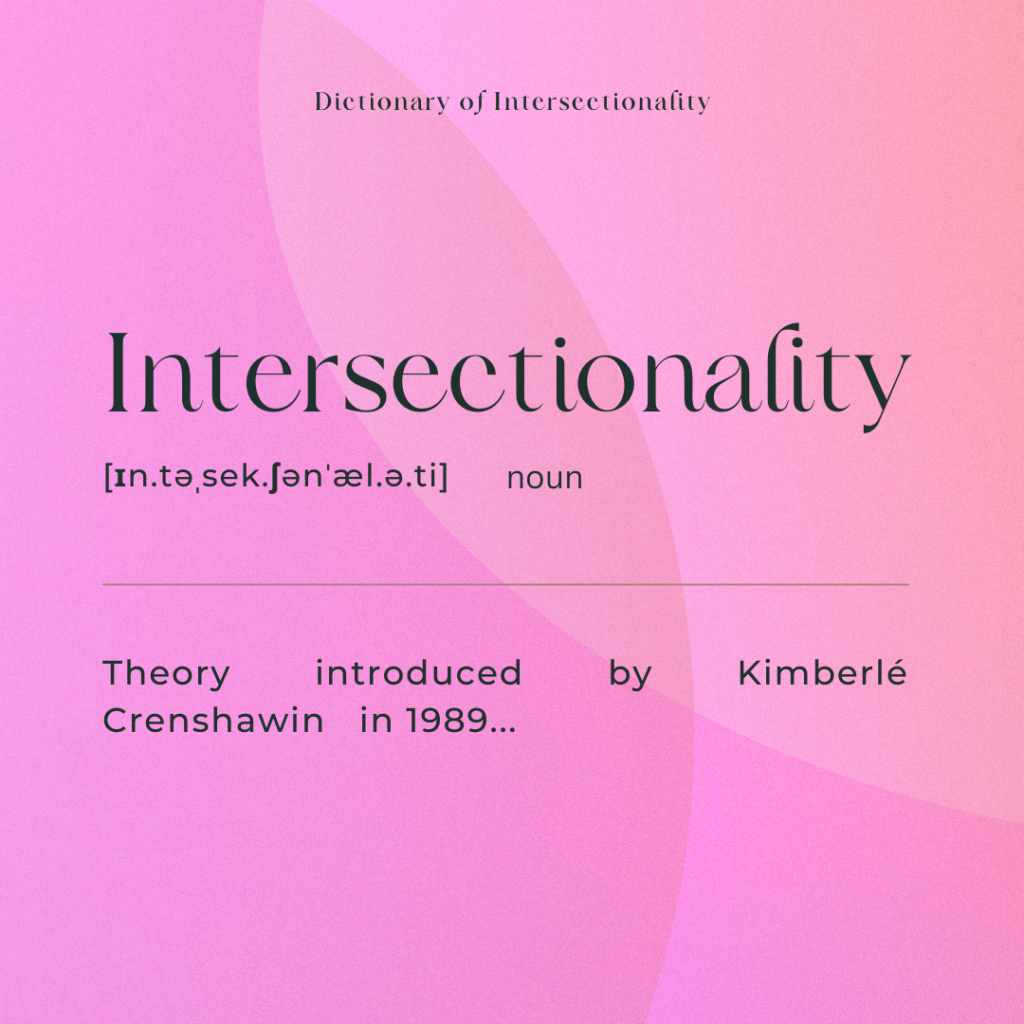
The term “intersectionality” was conceived by Kinmerlè Crenshaw in 1989, and describes how diverse factors as gender, ethnicity, sexual orientation, socio-economical status, religion, physical appearance, weight, disability or other forms of discrimination are integrated, and therefore are “intersected” among each other, and create a unique social identity, with its dynamics and effects within the society. For example, black women will experience a double disadvantage because of their gender and of the color of their skin, in comparison to white women, who will experience the disadvantage due to the gender and the advantage of being white. Intersectionality is a central concept of feminist thinking and has transformed how gender is conceptualised. It refers to the psychosocial, cultural and relational spheres of the individuals. intersectionality reflects the reality of lives, and is connected to the practices of inclusion, integration, exclusion and marginalization, as the intersected social identities might be both empowering and oppressing. The main contribution of the intersectional perspective is to tackle all forms of stigma and inequalities and to analyse them at the same time, in order to prevent one form of inequality to reinforce another one.
See more resources
Kimberlé Crenshaw explains what is intersectionality
Phoenix, A., & Pattynama, P. (2006). intersectionality. European Journal of Women’s Studies, 13(3), 187-192.
Shields, S. A. (2008). Gender: An intersectionality perspective. Sex roles, 59(5), 301-311.
McCall, L. (2005). The complexity of intersectionality. Signs: Journal of women in culture and society, 30(3), 1771-1800.
Center for Intersectional Justice Runyan, Anne Sisson (November–December 2018). “What Is Intersectionality and Why Is It Important?”
Zinn, Maxine Baca; Dill, Bonnie Thornton (1996). “Theorizing Difference from Multiracial Feminism”
